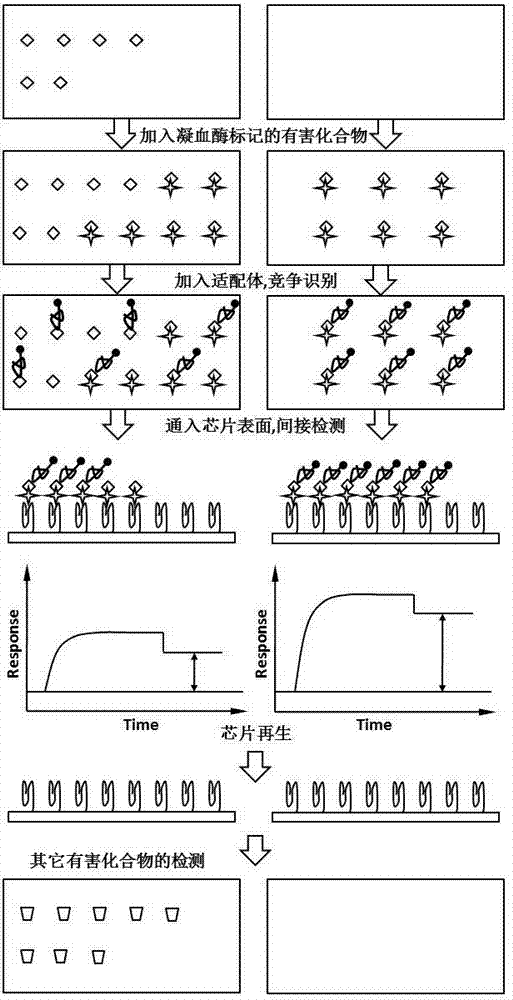Method detecting harmful compounds in plastic toy based on surface plasma resonance technology
A surface plasmon and plastic toy technology, applied in measuring devices, analyzing materials, scattering characteristics measurement, etc., can solve the problems of high cost, large amount of consumables, poor antibody stability, etc., to prolong service life, reduce detection cost, regenerate easy effect
- Summary
- Abstract
- Description
- Claims
- Application Information
AI Technical Summary
Problems solved by technology
Method used
Image
Examples
Embodiment
[0030] Example: Two typical harmful compounds bisphenol A and ethanolamine in plastic toys are selected as the detection objects, and the specific operation steps are as follows:
[0031] (1) Immobilization of aptamers on the surface of the sensor: select the sensor chip modified by streptavidin SA, and inject 20 μL of biotin-labeled thrombin aptamer with a concentration of 30 μg / L on the surface of the plasmon sensor chip. Immobilize the thrombin aptamer;
[0032] (2) Molecular probe label coupling: the analyte is coupled with thrombin by the glutaraldehyde method, and the labeling method is selected according to the group of the analyte, including EDC / NHS method, glutaraldehyde method, etc. , such as bisphenol A, can be linked with thrombin by EDC / NHS method, and set aside;
[0033] (3) Preparation of standard solution: Weigh 10 mg of bisphenol A standard substance, dissolve it in 0.02mol / L (pH=7.4) phosphate buffer solution and dilute to 10 mL, which is the standard stock ...
PUM
 Login to View More
Login to View More Abstract
Description
Claims
Application Information
 Login to View More
Login to View More - Generate Ideas
- Intellectual Property
- Life Sciences
- Materials
- Tech Scout
- Unparalleled Data Quality
- Higher Quality Content
- 60% Fewer Hallucinations
Browse by: Latest US Patents, China's latest patents, Technical Efficacy Thesaurus, Application Domain, Technology Topic, Popular Technical Reports.
© 2025 PatSnap. All rights reserved.Legal|Privacy policy|Modern Slavery Act Transparency Statement|Sitemap|About US| Contact US: help@patsnap.com

